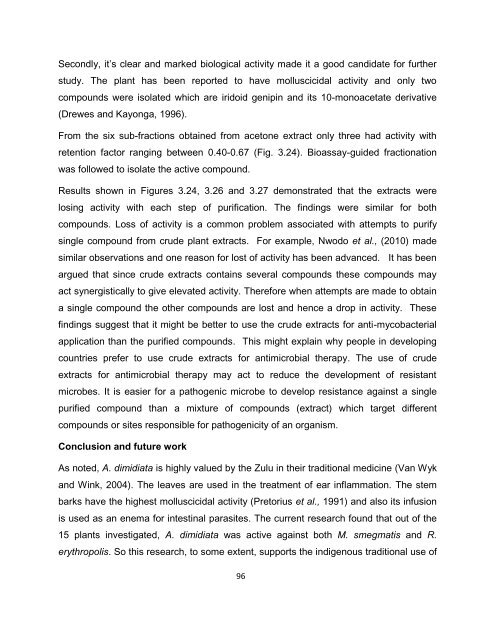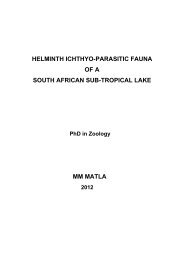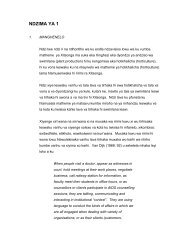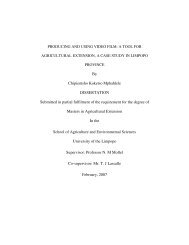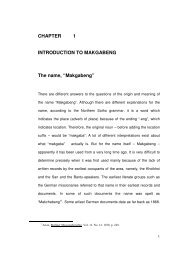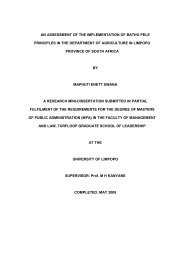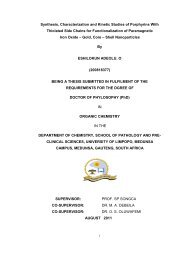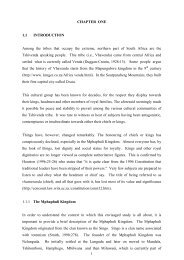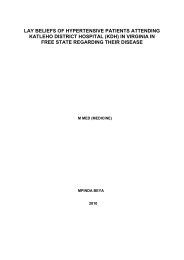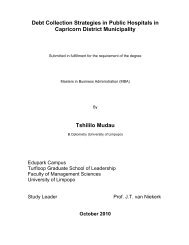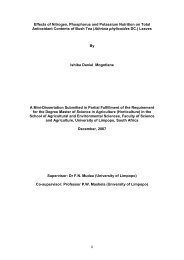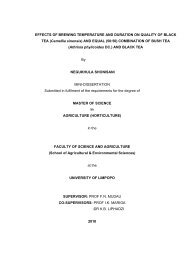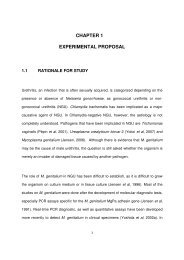Mmushi T MSc (Microbiology).pdf
Mmushi T MSc (Microbiology).pdf
Mmushi T MSc (Microbiology).pdf
You also want an ePaper? Increase the reach of your titles
YUMPU automatically turns print PDFs into web optimized ePapers that Google loves.
Secondly, it’s clear and marked biological activity made it a good candidate for further<br />
study. The plant has been reported to have molluscicidal activity and only two<br />
compounds were isolated which are iridoid genipin and its 10-monoacetate derivative<br />
(Drewes and Kayonga, 1996).<br />
From the six sub-fractions obtained from acetone extract only three had activity with<br />
retention factor ranging between 0.40-0.67 (Fig. 3.24). Bioassay-guided fractionation<br />
was followed to isolate the active compound.<br />
Results shown in Figures 3.24, 3.26 and 3.27 demonstrated that the extracts were<br />
losing activity with each step of purification. The findings were similar for both<br />
compounds. Loss of activity is a common problem associated with attempts to purify<br />
single compound from crude plant extracts. For example, Nwodo et al., (2010) made<br />
similar observations and one reason for lost of activity has been advanced. It has been<br />
argued that since crude extracts contains several compounds these compounds may<br />
act synergistically to give elevated activity. Therefore when attempts are made to obtain<br />
a single compound the other compounds are lost and hence a drop in activity. These<br />
findings suggest that it might be better to use the crude extracts for anti-mycobacterial<br />
application than the purified compounds. This might explain why people in developing<br />
countries prefer to use crude extracts for antimicrobial therapy. The use of crude<br />
extracts for antimicrobial therapy may act to reduce the development of resistant<br />
microbes. It is easier for a pathogenic microbe to develop resistance against a single<br />
purified compound than a mixture of compounds (extract) which target different<br />
compounds or sites responsible for pathogenicity of an organism.<br />
Conclusion and future work<br />
As noted, A. dimidiata is highly valued by the Zulu in their traditional medicine (Van Wyk<br />
and Wink, 2004). The leaves are used in the treatment of ear inflammation. The stem<br />
barks have the highest molluscicidal activity (Pretorius et al., 1991) and also its infusion<br />
is used as an enema for intestinal parasites. The current research found that out of the<br />
15 plants investigated, A. dimidiata was active against both M. smegmatis and R.<br />
erythropolis. So this research, to some extent, supports the indigenous traditional use of<br />
96


